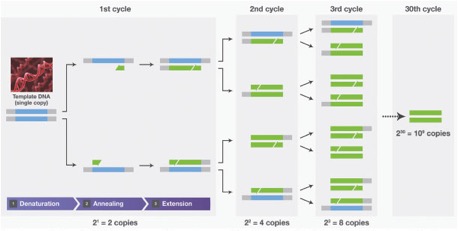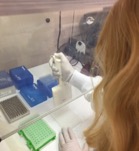Infectious disease is the biggest cause of economic loss for livestock farmers. A more comprehensive understanding of disease status along with the introduction of real-time PCR testing has shifted the way veterinarians and farmers are using diagnostics. PCR is used in outbreak situations and with pathogens that can be tough to culture, but it’s also used in routine disease monitoring programs.
What is PCR?
The polymerase chain reaction (PCR) is used to exponentially reproduce or amplify specific sections of DNA. Those DNA samples can be used to test for mastitis and other disease pathogens.

Videos
Benefits of PCR
The days of waiting several days or even weeks for culture results are over. With PCR, most tests are completed in hours, allowing for a faster diagnosis which can quickly be followed by the veterinarians and farmer developing an action plan.

PCR’s ability to detect infections before clinical signs have developed gives buyers the chance to screen new additions to their herds and enhance biosecurity. It has helps to identify and remove those animals with persistent, subclinical infections, which continue to infect other members of the herd.
PCR results are very reliable with a highly accurate positive or negative outcome with low levels of false positive or false negative results.
Game-changer for Mastitis
PCR doesn’t require a viable organism, only DNA is needed to get a result. However, with culture, trying to isolate and grow the infectious agent presents several challenges, especially with handling and transporting fragile organisms like Mycoplasma species.

PCR also allows a producer or veterinarian to perform tests on cows that have already been treated with antibiotics which wouldn’t be possible with a culture sample.
PCR can be used with individual cow samples or bulk milk samples which can be fresh, frozen or preserved. Plus, PCR offers the flexibility to store samples in refrigerators or even freeze them. A culture sample must be a recent, fresh sample.
Actionable results
About 40% to 50% of clinically abnormal milk samples tested with traditional culture will come back with a “no growth” result. This leaves dairy producers right where they started – with a mastitic cow and no diagnosis for accurate treatment.
A no growth result is often seen by farmers as a failed sample. A no growth means the culture grown didn’t identify the pathogen, and the mastitis could be caused by a variety of issues, including:
- A Gram-negative pathogen
- An intermittent Staph aureus shedder
- Mycoplasma which was so delicate that it didn’t survive the transport to the laboratory
This ultimately means additional testing is needed which requires even more time to get a conclusive result. During that time, you could have mastitis spreading to other cows in the herd which may have negative economic consequences.
PCR can provide mastitis results the same day, versus culture which can take up to 10 days. When considering the spread of disease to other cows that may need to be culled during the 10 or more days while waiting for results with culture, that is significant economically to a herd and another reason PCR should be used. Even though PCR is generally a higher initial cost, farmers often don’t mind paying a little more if they know they’re going to get a result that can help stop the spread of disease on their farm.
